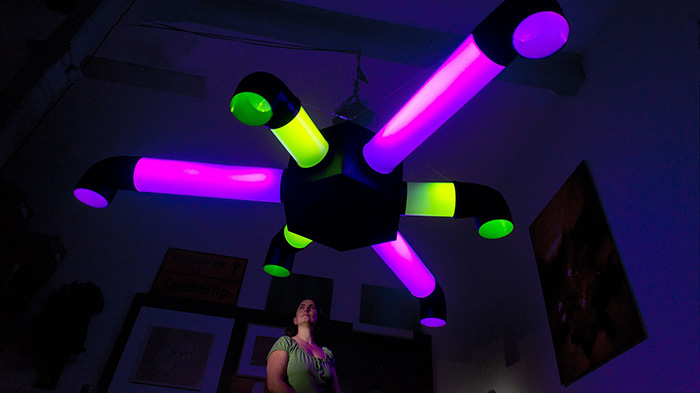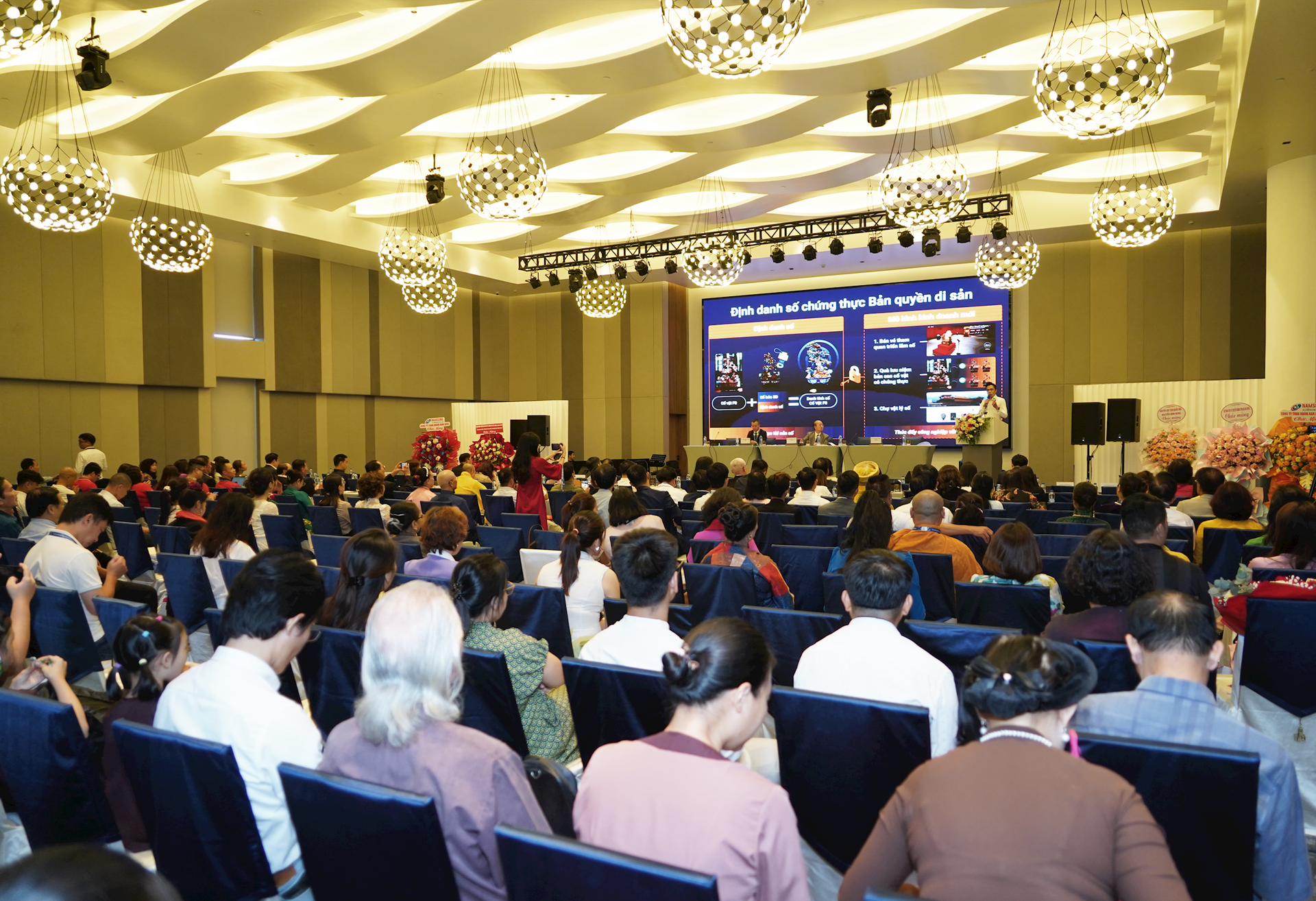Exhibition of German artist and composer in Hanoi
 |
Both installations, hanging from the ceiling above the visitor, describe a circular motion but in different ways. In “aura calculata”, nine tones circulate in a ring of 23 illuminated “sound pixels”.
The activity and the pitch of the tones are the result of a simple self-organization/neighbor rule: Each loudspeaker obeys the same rules on how to react to its neighbor’s activity – the same principle driving the “wave” in a stadium. So the driving force behind this system is a kind of mathematical socialism equalizing all sound pixels. By varying the neighbor rules, the interaction interestingly can produce various spatio-temporal patterns, be it an oscillation, regular patterns or simply chaotic noise.
During years of extended simulations, Roth explored the behavior of these minimalistic systems and discovered that over time some pixels are more active and others less. These tendencies are finally translated into variations in pitch and in the colors of the sound pixels, weaving a continuously changing sound carpet. Here Tim Otto Roth explores new harmonics, playing with microtonal scales such as 31-tone or 51-tone scales developed by Huygens or Mercator hundreds of years ago.
“Deep Doppler” circulates more physically. It consists of six translucent tubes of different lengths fixed to a hexagonal body circulating slowly above the heads of the audience. This horn-like construction permits the playing of saturated deep tones, which change their pitches slightly due to their relative motion – also described as the so-called Doppler Effect.
By rotation and by switching tones on and off, which can be followed by illumination, a rotating sound field is created traveling through the space and also the listener like a vibrating sound field, which might be followed by moments of local extinction of the sound.
The installations play alternately. For the premiere on 12 October, Tim Otto Roth has developed a composition for aura calculata accompanied by a live graphics projection translating the history of the system’s development. Such a history of the development of hundreds of steps is also presented as a 13m-long paper strip along the longest wall of the space.
In the display cases, printouts of his simulations are presented, being the source for Roth’s compositions and showing the whole dynamics of these self-organizing systems.
The conceptual artist and composer Tim Otto Roth (b. 1974, Oppenau/Black Forest) combines art and natural sciences in internationally-exhibited collaborations with leading research institutes and organizations such as the Hubble Space Telescope. In ‘Nature’ (458, 836), renowned Oxford art history professor Martin Kemp summarizes his work: “A new art is encoding a new science.” Roth holds a degree in Theory of Visual Communication and a PhD in art and science history from the Academy of Media Studies Arts in Cologne.
The exhibition is free.
What the stars mean:
★ Poor ★ ★ Promising ★★★ Good ★★★★ Very good ★★★★★ Exceptional
Latest News
More News
- Traditional Vietnamese crafts go digital to boost global reach (July 17, 2024 | 18:11)
- Standard Chartered Hanoi Heritage Race holds meet & greet (June 29, 2024 | 09:00)
- IFF Holdings, Marriott International open luxury hotel, residences (June 24, 2024 | 15:54)
- New Zealand Trade and Enterprise partners with major retailers to bring premium products to Vietnam (May 24, 2024 | 11:43)
- Vietnam’s tourism brand in need of methodical marketing strategies (May 17, 2024 | 07:52)
- Muong Thanh Group sets record for largest simultaneous Thai Xoe dance performances (May 08, 2024 | 11:42)
- Trang An marks 10th anniversary as UNESCO World Heritage Site (April 30, 2024 | 09:00)
- Visiting Trang An Heritage Region 2024 to join Trang An Festival (April 29, 2024 | 08:57)
- Le Méridien Saigon launches new series of Chefs' Table (April 15, 2024 | 15:35)
- Promoting Vietnam's tourism in Hollywood (April 13, 2024 | 08:00)
















 Mobile Version
Mobile Version